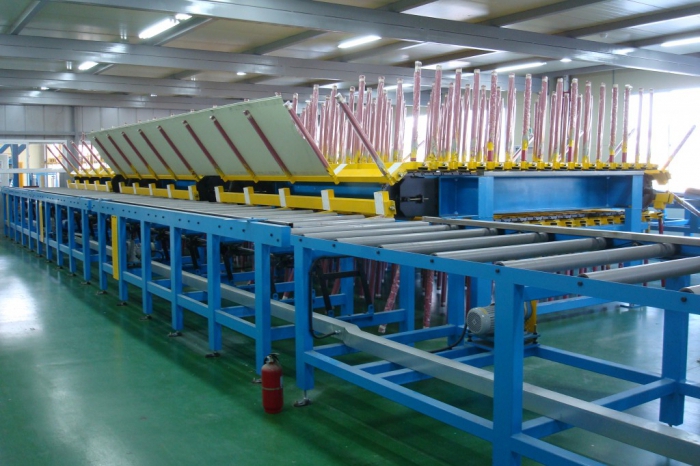Polymer materials have been widely used as thermal insulation of external and internal walls relatively recently. One of the most common are multilayer structures, combining mechanical strength and low coefficient of thermal conductivity. Properly selected equipment for the production of PVC sandwich panels will help to competently organize the release of this heat-insulating material.
Product Description
To create a complete production line, you must carefully familiarize yourself with this product and its manufacturing process. A sandwich panel is a multilayer structure consisting of 2 types of polymeric materials:
- Protective. It is made of PVC with the use of various additives. The thickness of the sheet is from 0.2 to 0.6 mm, depending on the application of the product.
- Heat insulating. Most often this is foamed polystyrene or its other modification obtained by extrusion.

Protective surfaces will protect the structure from mechanical damage and moisture in the insulation area. Polystyrene provides a proper indicator of the coefficient heat transfer resistance. The total thickness of the product ranges from 8 to 32 mm.
The technological scheme for the production of sandwich panels consists of several stages. But before organizing the production of sandwich panels for slopes, you need to learn more about the manufacturing principles and the required equipment.
Manufacturing technology
For the proper organization of the production process, it is necessary to take care of the supply of components in advance - PVC sheets and polystyrene. Their sizes should be as close as possible to the dimensions of the finished product. This will reduce cutting waste.

In most cases, manufacturing technology is a sequence of the following processes:
- Foam processing table. It is a lattice structure, the complete set of which includes a cutting mechanism. Most often, nichrome or tungsten filaments are used.
- Making cuts on the surface of the foam. To optimize the process, this function is often present in the table for cutting foam.
- Glue application. Equipment for the production of PVC sandwich panels should include a machine for processing the surface of the plates with a binder composition.
- Pressing. This is the final stage during which pressure is applied to the product. This procedure is necessary for the formation of inextricable bonds between the PVC sheets and the polypropylene layer.
If necessary, adjust the size of the sandwich by cutting its edges.
Insulation treatment
In most cases, polystyrene is used as a heater. The dimensions of standard sheets do not always correspond to the dimensions of plastic panels. Therefore, before starting the bonding procedure, the insulation must undergo the processing procedure.

First, the processing of raw materials is performed - cutting to the desired size. Further, longitudinal recesses up to 5 mm thick are made on the surface of the polystyrene foam for applying the adhesive composition. Machines for the production of sandwich panels, which must fulfill this function, have a special moving block with thin tungsten filaments. When they are heated, the cut-off point will be not only perfectly smooth, but also the end face of the insulation will be processed.This will prevent caverns from appearing that will reduce the quality of the entire product.
Pasting the surface
Equipment for the production of PVC sandwich panels necessarily includes a machine for applying adhesive. This can be a manual dispenser or a complex frame design that works in automatic mode. For production with a small volume of output, you can use simple installations with one-component adhesive. However, not always the quality of the product with this technology will be acceptable.

It is best to use the so-called 2-component adhesive for the production of sandwich panels. When mixing 2 substances - isocyanate and polyol - a polyurethane composition is obtained. The principle of its effect is based on a change in the upper molecular layer of the panels, which, when pressed, leads to the emergence of a reliable adhesive layer. However, before use, it should be noted that in the free state the resulting composition can be up to 5 minutes. Otherwise, foaming and loss of performance occurs.
Assembly
Final assembly is carried out on a press machine. The finished product is horizontally placed on the surface of the table, after which pressure is applied to the sandwich using a mechanical or vacuum method.
Using homemade installations is not recommended, since only professional equipment for the production of PVC sandwich panels can provide uniform clamping. The pressure vector must be directed strictly perpendicular to the plane of the product. Otherwise, sheet displacement may occur, resulting in defective products.
At the end of this process, the sandwich panel is ready for use. It can be used as a wall insulation or become an element of a window structure.








